#Ellen Miriam Hopkins
Text
9 ottobre … ricordiamo …
9 ottobre … ricordiamo …
#semprevivineiricordi #nomidaricordare #personaggiimportanti #perfettamentechic
2022: Eileen Ryan, Eileen Rose Annucci, attrice statunitense. Nacque in una famiglia cattolica di origini italo-irlandesi, figlia dell’infermiera Rose Isabel Ryan e del dentista Amerigo Giuseppe Annucci. Durante la sua carriera d’attrice recitò principalmente in serie televisive. Dagli anni ottanta apparve frequentemente sugli schermi cinematografici. Eileen fu moglie del regista Leo Penn, e…
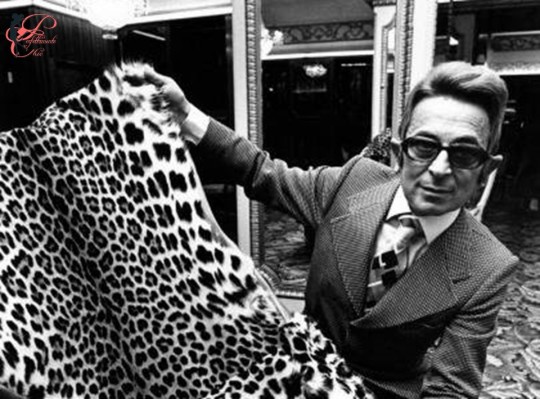
View On WordPress
#9 ottobre#Alice Joyce#Ann Boothe#Arch Johnson#Archibald Winchester Johnson#Cecil Thiré#Clare Boothe Luce#Diane Jergens#Dianne Irgens#Edith Storey#Eileen Rose Annucci#Eileen Ryan#Ellen Miriam Hopkins#Enrico Venantino Venantini#Giuliano Ravizza#Harald Reinl#Helen Morgan#Helen Riggins#Helene Lucie von Holwede#Jean Raoul Robert Rochefort#Jean Rochefort#Joyce Fair#Lucie Höflich#Marie Doro#Miriam Hopkins#Morti 9 ottobre#Norma Aparecida Almeida Pinto Guimarães D&039;Áurea Bengell#Norma Bengell#Norma Benguel#Personaggi importanti
0 notes
Text
this is a poll for a movie that doesn't exist.
It is vintage times. The powers that be have decided to again remake the classic vampire novel Dracula for the screen. in an amazing show of inter-studio solidarity, Hollywood’s most elite hotties are up for the starring roles. the producers know whoever they cast will greatly impact the genre, quality, and tone of the finished film, so they are turning to their wisest voices for guidance.
you are the new casting director for this star-studded epic. choose your players wisely.
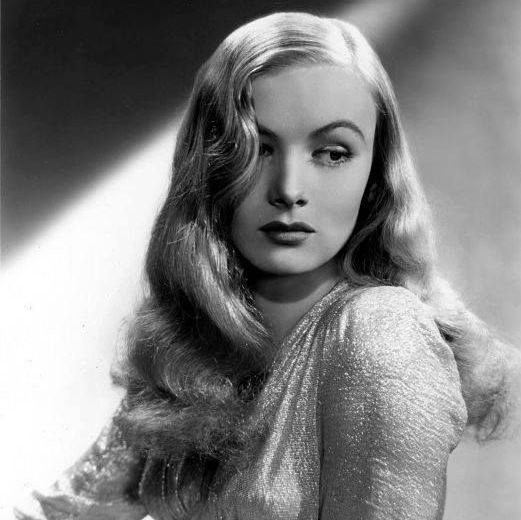
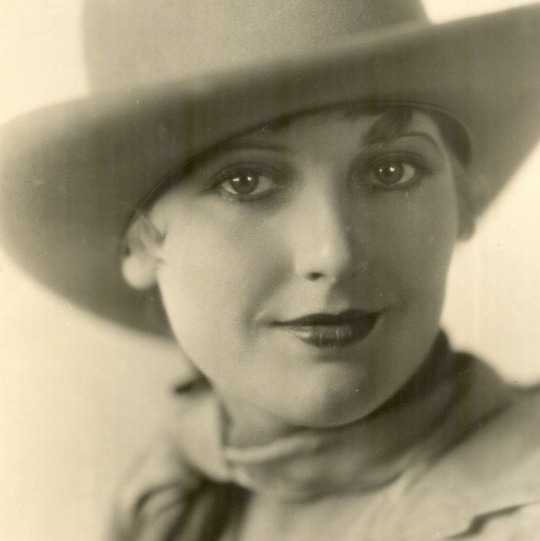
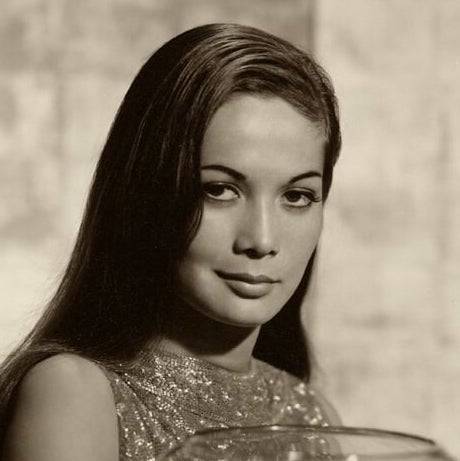
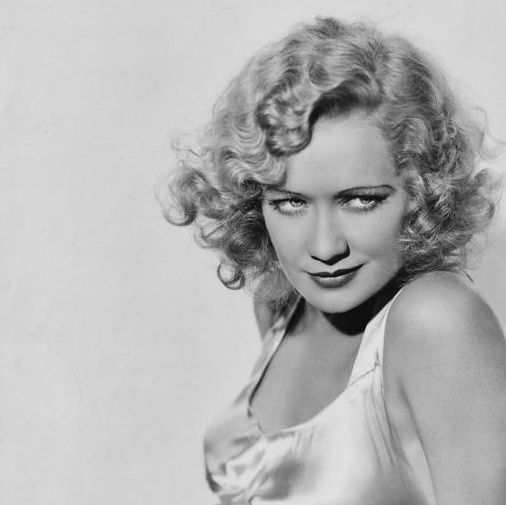
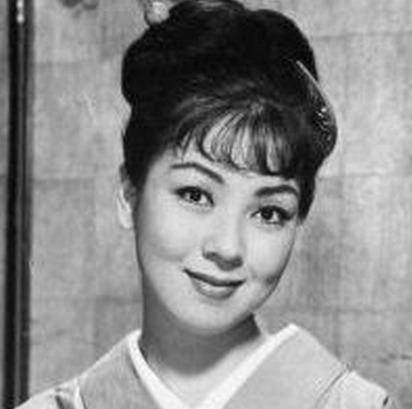
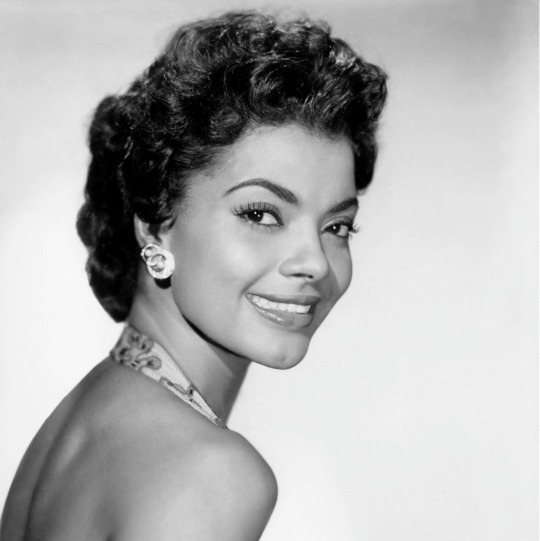
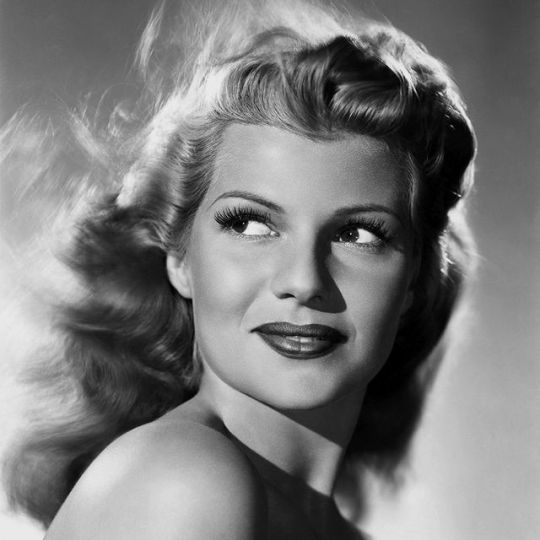
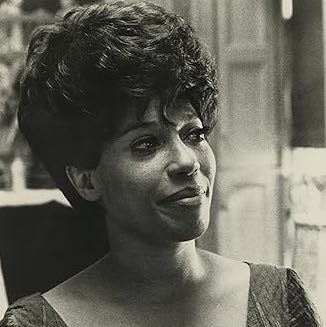
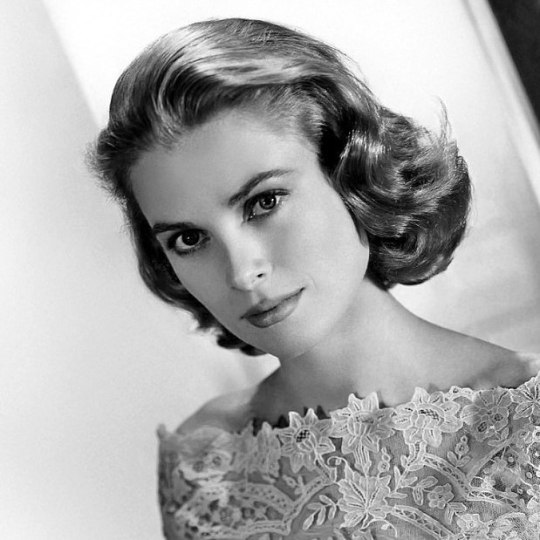


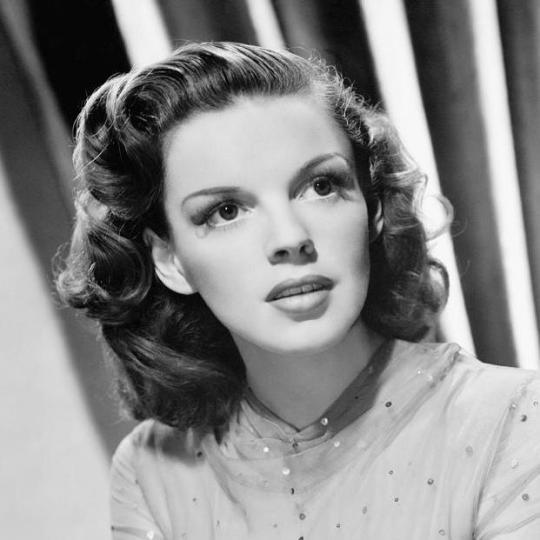
(no contestants currently in Round 6 of the Hot & Vintage Women Tournament have been included to avoid tipping the vote.)
Previously cast:
Jonathan Harker—Jimmy Stewart
The Old Woman—Martita Hunt
Count Dracula—Gloria Holden
Mina Murray—Setsuko Hara
#dracula#dracula daily#hotvintagepoll#minis#silly times#lucy westenra#almost forgot to post this! oops!
487 notes
·
View notes
Text

Miriam Hopkins (nee Ellen Miriam Hopkins) was born on October 18, 1902, in Savannah, Georgia and passed away on October 9, 1972. She was an actress known for her versatility. She signed with Paramount Pictures in 1930."
"She portrayed a pickpocket in Ernst Lubitsch's romantic comedy Trouble in Paradise, a bar singer Ivy in Rouben Mamoulian's "Dr. Jekyll and Mr. Hyde", and the titular character in the controversial drama "The Story of Temple Drake". She received a nomination for the Academy Award for Best Actress for the 1935 film "Becky Sharp", becoming the first performer nominated for a color picture. She was nominated for a Golden Globe for "The Heiress". She co-starred with Joel McCrea in five films."-Wikipedia
Her long-running feud with actress Bette Davis was publicized for effect. Hopkins later became a pioneer of TV drama. She was considered a distinguished hostess in Hollywood and moved in intellectual and creative circles.
6 notes
·
View notes
Text

Gene Eliza Tierney (November 19, 1920 – November 6, 1991) was an American film and stage actress. Acclaimed as a great beauty, she became established as a leading lady. Tierney was best known for her portrayal of the title character in the film Laura (1944), and was nominated for an Academy Award for Best Actress for her performance as Ellen Berent Harland in Leave Her to Heaven (1945).
Tierney's other roles include Martha Strable Van Cleve in Heaven Can Wait (1943), Isabel Bradley Maturin in The Razor's Edge (1946), Lucy Muir in The Ghost and Mrs. Muir (1947), Ann Sutton in Whirlpool (1949), Maggie Carleton McNulty in The Mating Season (1951), and Anne Scott in The Left Hand of God (1955).
I Gene Eliza Tierney was born on November 19, 1920 in Brooklyn, New York, the daughter of Howard Sherwood Tierney and Belle Lavinia Taylor. She was named after a beloved uncle, who died young.[4][page needed] She had an elder brother, Howard Sherwood "Butch" Tierney Jr., and a younger sister, Patricia "Pat" Tierney. Their father was a successful insurance broker of Irish descent, their mother a former physical education instructor.[4][page needed]
Tierney was raised in Westport, Connecticut. She attended St. Margaret's School in Waterbury, Connecticut, and the Unquowa School in Fairfield. She published her first poem, entitled "Night", in the school magazine and wrote poetry occasionally throughout her life. Tierney played Jo in a student production of Little Women, based on the novel by Louisa May Alcott.
Tierney spent two years in Europe, attending Brillantmont International School in Lausanne, Switzerland, where she learned to speak fluent French. She returned to the US in 1938 and attended Miss Porter's School in Farmington, Connecticut. On a family trip to the West Coast, she visited Warner Bros. studios, where a cousin worked as a producer of historical short films. Director Anatole Litvak, taken by the 17-year-old's beauty, told Tierney that she should become an actress. Warner Bros. wanted to sign her to a contract, but her parents advised against it because of the relatively low salary; they also wanted her to take her position in society.
Tierney's society debut occurred on September 24, 1938, when she was 17 years old. page needed] Soon bored with society life, she decided to pursue an acting career. Her father said, "If Gene is to be an actress, it should be in the legitimate theatre." Tierney studied acting at a small Greenwich Village acting studio in New York with Yiddish and Broadway actor/director Benno Schneider. She became a protégée of Broadway producer-director George Abbott.
In Tierney's first role on Broadway, she carried a bucket of water across the stage in What a Life! (1938). A Variety magazine critic declared, "Miss Tierney is certainly the most beautiful water carrier I've ever seen!" She also worked as an understudy in The Primrose Path (1938).
The following year, she appeared in the role of Molly O'Day in the Broadway production Mrs. O'Brien Entertains (1939). The New York Times critic Brooks Atkinson wrote, "As an Irish maiden fresh from the old country, Gene Tierney in her first stage performance is very pretty and refreshingly modest." That same year, Tierney appeared as Peggy Carr in Ring Two (1939) to favorable reviews. Theater critic Richard Watts Jr. of the New York Herald Tribune wrote, "I see no reason why Miss Tierney should not have an interesting theatrical career – that is, if cinema does not kidnap her away."
Tierney's father set up a corporation, Belle-Tier, to fund and promote her acting career. Columbia Pictures signed her to a six-month contract in 1939. She met Howard Hughes, who tried unsuccessfully to seduce her. From a well-to-do family herself, she was not impressed by his wealth. Hughes eventually became a lifelong friend.
After a cameraman advised Tierney to lose a little weight, she wrote to Harper's Bazaar magazine for a diet, which she followed for the next 25 years. Tierney was initially offered the lead role in National Velvet, but production was delayed. page needed] When Columbia Pictures failed to find Tierney a project, she returned to Broadway and starred as Patricia Stanley to critical and commercial success in The Male Animal (1940). In The New York Times, Brooks Atkinson wrote, "Tierney blazes with animation in the best performance she has yet given". She was the toast of Broadway before her 20th birthday. The Male Animal was a hit, and Tierney was featured in Life magazine. She was also photographed by Harper's Bazaar, Vogue, and Collier's Weekly.
Two weeks after The Male Animal opened, Darryl F. Zanuck, the head of 20th Century Fox, was rumored to have been in the audience. During the performance, he told an assistant to note Tierney's name. Later that night, Zanuck dropped by the Stork Club, where he saw a young lady on the dance floor. He told his assistant, "Forget the girl from the play. See if you can sign that one." It was Tierney. At first, Zanuck did not think she was the actress he had seen. Tierney was quoted (after the fact), saying: "I always had several different 'looks', a quality that proved useful in my career."
Tierney signed with 20th Century-Fox[4][page needed] and her motion picture debut was in a supporting role as Eleanor Stone in Fritz Lang's western The Return of Frank James (1940), opposite Henry Fonda.
A small role as Barbara Hall followed in Hudson's Bay (1941) with Paul Muni and she co-starred as Ellie Mae Lester in John Ford's comedy Tobacco Road (also 1941), and played the title role in Belle Starr alongside co-star Randolph Scott, Zia in Sundown, and Victoria Charteris (Poppy Smith) in The Shanghai Gesture. She played Eve in Son of Fury: The Story of Benjamin Blake (1942), as well as the dual role of Susan Miller (Linda Worthington) in Rouben Mamoulian's screwball comedy Rings on Her Fingers, and roles as Kay Saunders in Thunder Birds, and Miss Young in China Girl (all 1942).
Receiving top billing in Ernst Lubitsch's comedy Heaven Can Wait (1943), as Martha Strable Van Cleve, signaled an upward turn in Tierney's career. Tierney recalled during the production of Heaven Can Wait:
Lubitsch was a tyrant on the set, the most demanding of directors. After one scene, which took from noon until five to get, I was almost in tears from listening to Lubitsch shout at me. The next day I sought him out, looked him in the eye, and said, 'Mr. Lubitsch, I'm willing to do my best but I just can't go on working on this picture if you're going to keep shouting at me.' 'I'm paid to shout at you', he bellowed. 'Yes', I said, 'and I'm paid to take it – but not enough.' After a tense pause, Lubitsch broke out laughing. From then on we got along famously.
Tierney starred in what became her best-remembered role: the title role in Otto Preminger's film noir Laura (1944), opposite Dana Andrews. After playing Tina Tomasino in A Bell for Adano (1945), she played the jealous, narcissistic femme fatale Ellen Berent Harland in Leave Her to Heaven (1945), adapted from a best selling novel by Ben Ames Williams. Appearing with Cornel Wilde, Tierney won an Academy Award nomination for Best Actress. This was 20th Century-Fox' most successful film of the 1940s. It was cited by director Martin Scorsese as one of his favorite films of all time, and he assessed Tierney as one of the most underrated actresses of the Golden Era.
Tierney then starred as Miranda Wells in Dragonwyck (1946), along with Walter Huston and Vincent Price. It was Joseph L. Mankiewicz' debut film as a director, In the same period, she starred as Isabel Bradley, opposite Tyrone Power, in The Razor's Edge (also 1946), an adaptation of W. Somerset Maugham's novel of the same name. Her performance was critically praised.
Tierney played Lucy Muir in Mankiewicz's The Ghost and Mrs. Muir (1947), opposite Rex Harrison. The following year, she co-starred again with Power, this time as Sara Farley in the successful screwball comedy That Wonderful Urge (1948). As the decade came to a close, Tierney reunited with Laura director Preminger to star as Ann Sutton in the classic film noir Whirlpool (1949), co-starring Richard Conte and José Ferrer. She appeared in two other film noirs: Jules Dassin's Night and the City, shot in London, and Otto Preminger's Where the Sidewalk Ends (both 1950), reunited with both Preminger and leading man Dana Andrews, who she appeared with in five movies total.
Tierney was loaned to Paramount Pictures, giving a comic turn as Maggie Carleton in Mitchell Leisen's ensemble farce, The Mating Season (1951), with John Lund, Thelma Ritter, and Miriam Hopkins. She gave a tender performance as Midge Sheridan in the Warner Bros. film, Close to My Heart (1951), with Ray Milland. The film is about a couple trying to adopt a child. Later in her career, she was reunited with Milland in Daughter of the Mind (1969).
After Tierney appeared opposite Rory Calhoun as Teresa in Way of a Gaucho (1952), her contract at 20th Century-Fox expired. That same year, she starred as Dorothy Bradford in Plymouth Adventure, opposite Spencer Tracy at MGM. She and Tracy had a brief affair during this time.[10] Tierney played Marya Lamarkina opposite Clark Gable in Never Let Me Go (1953), filmed in England.
In the course of the 1940s, she reached a pinnacle of fame as a beautiful leading lady, on a par with "fellow sirens Rita Hayworth, Lana Turner and Ava Gardner". She was "called the most beautiful woman in movie history" and many of her movies in the 1940s became classic films.
Tierney remained in Europe to play Kay Barlow in United Artists' Personal Affair (1953). While in Europe, she began a romance with Prince Aly Khan, but their marriage plans met with fierce opposition from his father Aga Khan III. Early in 1953, Tierney returned to the U.S. to co-star in the film noir Black Widow (1954) as Iris Denver, with Ginger Rogers and Van Heflin.
Tierney had reportedly started smoking after a screening of her first movie to lower her voice, because she felt, "I sound like an angry Minnie Mouse." She subsequently became a heavy smoker.
With difficult events in her personal life, Tierney struggled for years with episodes of manic depression. In 1943, she gave birth to a daughter, Daria, who was deaf and mentally disabled, the result of a fan breaking a rubella quarantine and infecting the pregnant Tierney while she volunteered at the Hollywood Canteen. In 1953, she suffered problems with concentration, which affected her film appearances. She dropped out of Mogambo and was replaced by Grace Kelly.[4][page needed] While playing Anne Scott in The Left Hand of God (1955), opposite Humphrey Bogart, Tierney became ill. Bogart's sister Frances (known as Pat) had suffered from mental illness, so he showed Tierney great sympathy, feeding her lines during the production and encouraging her to seek help.
Tierney consulted a psychiatrist and was admitted to Harkness Pavilion in New York. Later, she went to the Institute of Living in Hartford, Connecticut. After some 27 shock treatments, intended to alleviate severe depression, Tierney fled the facility, but was caught and returned. She later became an outspoken opponent of shock treatment therapy, claiming it had destroyed significant portions of her memory.
In late December 1957, Tierney, from her mother's apartment in Manhattan, stepped onto a ledge 14 stories above ground and remained for about 20 minutes in what was considered a suicide attempt. Police were called, and afterwards Tierney's family arranged for her to be admitted to the Menninger Clinic in Topeka, Kansas. The following year, after treatment for depression, she was discharged. Afterwards, she worked as a sales girl in a local dress shop with hopes of integrating back into society, but she was recognized by a customer, resulting in sensational newspaper headlines.
Later in 1958, 20th Century-Fox offered Tierney a lead role in Holiday for Lovers (1959), but the stress upon her proved too great, so only days into production, she dropped out of the film and returned to Menninger for a time.
Tierney made a screen comeback in Advise and Consent (1962), co-starring with Franchot Tone and reuniting with director Otto Preminger.[4][page needed] Soon afterwards, she played Albertine Prine in Toys in the Attic (1963), based on the play by Lillian Hellman. This was followed by the international production of Las cuatro noches de la luna llena, (Four Nights of the Full Moon - 1963), in which she starred with Dan Dailey. She received critical praise overall for her performances.
Tierney's career as a solid character actress seemed to be back on track as she played Jane Barton in The Pleasure Seekers (1964), but then she suddenly retired. She returned to star in the television movie Daughter of the Mind (1969) with Don Murray and Ray Milland. Her final performance was in the TV miniseries Scruples (1980).
Tierney married two men: the first was Oleg Cassini, a costume and fashion designer, on June 1, 1941, with whom she eloped. She was 20 years old. Her parents opposed the marriage, as he was from a Russian-Italian family and born in France. She had two daughters, Antoinette Daria Cassini (October 15, 1943 – September 11, 2010) and Christina "Tina" Cassini (November 19, 1948 – March 31, 2015).
In June 1943, while pregnant with Daria, Tierney contracted rubella (German measles), likely from a fan ill with the disease. Antoinette Daria Cassini was born prematurely in Washington, DC, weighing three pounds, two ounces (1.42 kg) and requiring a total blood transfusion. The rubella caused congenital damage: Daria was deaf, partially blind with cataracts, and severely mentally disabled. She was institutionalized for much of her life. This entire incident was inspiration for a plot point in the 1962 Agatha Christie novel The Mirror Crack'd from Side to Side.
It is claimed that she had an affair with Mohammad Reza Shah of Iran during the late 1940s.
Tierney's friend Howard Hughes paid for Daria's medical expenses, ensuring the girl received the best care. Tierney never forgot his acts of kindness. Daria Cassini died in 2010, at the age of 66.
Tierney and Cassini separated October 20, 1946, and entered into a property settlement agreement on November 10. Periodicals during this period record Tierney with Charles K. Feldman, including articles related to her "twosoming" with Feldman, her "current best beau". The divorce was to be finalized in March 1948, but they reconciled before then.
During their separation, Tierney met John F. Kennedy, a young World War II veteran, who was visiting the set of Dragonwyck in 1946. They began a romance that she ended the following year after Kennedy told her he could never marry her because of his political ambitions. In 1960, Tierney sent Kennedy a note of congratulations on his victory in the presidential election. During this time, newspapers documented Tierney's other romantic relationships, including Kirk Douglas.
While filming for Personal Affair in Europe, she began a romance with Prince Aly Khan. They became engaged in 1952, while Khan was going through a divorce from Rita Hayworth. Their marriage plans, however, met with fierce opposition from his father, Aga Khan III.
Cassini later bequeathed $500,000 in trust to Daria and $1,000,000 to Christina. Cassini and Tierney remained friends until her death in November 1991.
In 1958, Tierney met Texas oil baron W. Howard Lee, who had been married to actress Hedy Lamarr since 1953. Lee and Lamarr divorced in 1960 after a long battle over alimony, then Lee and Tierney married in Aspen, Colorado, on July 11, 1960. They lived quietly in Houston, Texas, and Delray Beach, Florida until his death in 1981.
Despite her self-imposed exile in Texas, Tierney received work offers from Hollywood, prompting her to a comeback. She appeared in a November 1960 broadcast of General Electric Theater, during which time she discovered that she was pregnant. Shortly after, 20th Century Fox announced Tierney would play the lead role in Return to Peyton Place, but she withdrew from the production after suffering a miscarriage.
Tierney's autobiography, Self-Portrait, in which she candidly discusses her life, career, and mental illness, was published in 1979.
Tierney's second husband, W. Howard Lee, died on February 17, 1981 after a long illness.[24]
In 1986, Tierney was honored alongside actor Gregory Peck with the first Donostia Lifetime Achievement Award at the San Sebastian Film Festival in Spain.
Tierney has a star on the Hollywood Walk of Fame at 6125 Hollywood Boulevard.
Tierney died of emphysema on November 6, 1991, in Houston, thirteen days before her 71st birthday. She is interred in Glenwood Cemetery in Houston.
Certain documents of Tierney's film-related material, personal papers, letters, etc., are held in the Wesleyan University Cinema Archives, though her papers are closed to the public.
21 notes
·
View notes
Text
Edmund Goulding
Un gran director de actores
La figura de Edmund Goulding está, para mí, rodeada de una cierta aureola de misterio: cualquiera de sus películas sugiere que su director es un hombre cultivado, inteligente y elegante... pero bastante poco más. De nada sirve ir conociendo mejor su obra, porque resulta igual de impenetrable cuando uno ha visto doce o trece que cuando apenas recordaba vagamente tres.
Esa hipótesis acerca de su carácter parece verse confirmada al buscar su nombre en un diccionario y descubrir que nació el año 1891 en Inglaterra —a cuyos nativos se suelen atribuir, acaso abusivamente, algunos de esos rasgos— e hizo y escribió teatro —Out of the Fog y God Save the King, y Ellen Young en colaboración—, por entonces considerado un «arte» mucho más respetable que el cine, incluso si se trataba más bien de revistas, de vaudeville o de music hall, que de hecho fueron las principales canteras escénicas de las que se reclutaron directores e intérpretes cinematográficos, sobre todo a partir de la irrupción del sonido.
Aunque hay que recordar que Goulding ya en 1921 estaba haciendo películas —como guionista y actor— en América, pues nunca trabajó en este medio en Europa; poco después, como tantos ingleses, escribió una novela de aventuras marítimas, Fury, que fue llevada al cine por Henry King. Entre los directores para los que escribió o actuó, junto al ya mencionado y entonces prestigioso King en más de una ocasión —por ejemplo, en la célebre Tol'able David (1921), que tanto admiró Pudovkin—, figuran nombres tan ilustres en esos años como hoy olvidados o desconocidos; por ejemplo, Herbert Brenon, George Fitzmaurice y Robert Z. Leonard.
Es muy posible que su «británica» flema, y una cierta discreción y modestia, hayan contribuido a desdibujar la personalidad de Goulding: sorprende que un hombre de carácter o con aspiraciones estéticas bien definidas fuera capaz de adoptar tan camaleónicamente los estilos de las sucesivas compañías de producción en que asiduamente trabajó: sus tres films con George Brent y Bette Davis, a finales de los años 30, son tan típicos de la First National - Warner Bros, como característicos de la Fox los de los años 40 y 50, pero el único de sus films mudos que conozco, para mí la mejor versión de la novela de Tolstoi Anna Karenina que ha dado el cine, Love (1927), es inequívocamente Metro, la primera productora que le contrató como director-guionista, y no sólo por la presencia de Greta Garbo. A pesar de la colaboración no claramente determinada del director teatral ruso Dimitri Buchowetzki, que parece haber ido más allá de supervisar la ambientación y los decorados para asegurar la autenticidad de la atmósfera rusa de la película, esta obra sería suficiente para justificar que se prestara atención a la filmografía de Goulding.
Cuanto acabo de decir sugiere que su estilo era maleable y poco personal: parece limitarse a un par de principios básicos muy generales, identificables con la tradición clásica del cine americano, que siempre pueden aplicarse, aunque se acepten las modas y el look particular de cada productora, y se pase del glamour brillante y un poco plano de la Metro a la imagen más seca y contrastada, con ritmo más rápido, de la Warner, para volver a la morosidad algo solemne —cuando no pomposa— de los productos de prestigio de la Fox, indisociada de un uso discreto pero sistemático de la profundidad de campo y de una extraordinaria nitidez fotográfica, es decir, de la asimilación estandarizada de algunos rasgos de los estilos personales, casi opuestos pero con una base común —no en vano compartieron a Gregg Toland como director de fotografía y suscitaron simultáneamente el interés de André Bazin—, y quizá complementarios, que sentaron William Wyler (desde finales de los años 30) y Orson Welles (a principios de los 40).
El rasgo que unifica todas las películas de Goulding que conozco es la inteligentísima y enérgica dirección de actores, sin duda su punto fuerte y el fundamento de su prestigio tanto en la industria —para productores, distribuidores y exhibidores, por aquellas fechas prácticamente los mismos, o al menos empleados del mismo patrón— como entre las estrellas más cotizadas: todos parecían dispuestos a trabajar con él, que debía ser un competente y educado guía, si no hacia el Oscar, sí, al menos, hacia las críticas elogiosas y el incremento de la popularidad.
Si nos fijamos con cierta perspectiva en sus películas, su filmografía se presenta como un desfile de personajes, entre los que destacan, casi siempre, los femeninos, sin que ello le convierta en un women's director ni le impida en modo alguno —como se pretende, exageradamente, a propósito de Cukor— profundizar en los masculinos. De hecho, fue un cineasta con el que trabajaron más de una vez varios de los actores principales, más taquilleras y por ello más exigentes y conflictivos de la Fox, como Tyrone Power, Paul Douglas o Linda Darnell, lo mismo que Bette Davis, Miriam Hopkins, Humphrey Bogart o George Brent en la Warner o Greta Garbo en la Metro, o Gloria Swanson, Marion Davis, Burt Lancaster, Edmund Gwenn, Dorothy McGuire, Charles Boyer, Joan Fontaine, Alexis Smith... El reparto de Grand Hotel es uno de los más impresionantes y heterogéneos que cabe imaginar, sólo superado, quizás, por el de El filo de la navaja.
Se habrá adivinado que, en rigor, no hay temas que puedan considerarse, ni siquiera con mucha fantasía y una capacidad de abstracción digna de mejor causa, como propios de Goulding. Dejó de ser actor y de firmar guiones —aunque es de suponer que seguiría, desde el anonimato favorecido por el reglamento del Screen Writers Guild, interviniendo en ellos sin ser acreditado por este trabajo—, aunque es el autor del argumento del musical matriz Broadway Melody y no dejó de escribir letras de canciones ni de componer melodías, que silbaba o tarareaba y alguien técnicamente más preparado y competente trascribía al pentagrama y orquestaba, canciones que a menudo tuvieron un éxito notable («Love, Your Magic Spell Is Everywhere». «You Are A Song»).
Tampoco es seguro que sintiese predilección por algún género en particular, si bien es cierto que —en cualquiera de las productoras de las que fue un pilar durante unos años— la mayoría de sus películas pueden considerarse melodramas, por lo general «dignificados» por su condición de —más o menos fidedignas— adaptaciones de novelas, si no siempre prestigiosas, sí al menos «respetables», es decir, best-sellers tan populares como The Razor's Edge (El filo de la navaja), del laureado y entonces muy bien visto por la crítica literaria W. Somerset Maugham, y no exentas de cierta pretensión filosófica y moralizante, que servía de excusa o coartada para narrar con fría elegancia y minuciosidad desapasionada, muy «desde fuera» de los personajes, peripecias inverosímiles o febriles dramas pasionales, implícita, reprimida o sublimadamente cargados de sexualidad e impulsados, fundamentalmente, por la ambición y el deseo. Es decir, la fórmula que sigue haciendo hoy furor, en series de televisión como «Dallas» o «Falcon Crest», pero en bien: con educación y buen gusto, con seriedad, tomándose interés por los personajes y sus andanzas.
Pero también hizo comedias, más finas que dinámicas, más irónicas que enloquecidas, sobre todo en los anteúltimos años de su carrera: ahí puede decirse que le hubiera representado a la perfección la figura atildada y maniática, tan excéntrica y amanerada como educadamente impertinente y mordaz, de su compatriota Clifton Webb, que parece haber dedicado la mayor parte de su filmografía a dar vida a benévolas reencarnaciones, bajo nombres como Mr. Belvedere, de su irónico retrato de Waldo Lydecker en Laura (1944) de Otto Preminger.
Nunca, ni siquiera obligado por su contrato con la Warner, llegó Goulding a contagiarse de la tendencia a la concisión acelerada de Raoul Walsh, Michael Curtiz, William Keighley o incluso Lloyd Bacon, Mervyn LeRoy o David Butler, sino que se mantuvo siempre más cerca del tono pausado de Clarence Brown en la Metro, Henry King en la Fox o John Cromwell donde quiera que estuviese (RKO, Columbia, etc.).
De hecho, lo más definitorio que puede decirse de Goulding es que se tomaba las cosas con calma, sin alterarse, por abundantes y melodramáticos que fueron los hechos que narraba. De ahí que hasta las más turbulentas historias las contase con serenidad y orden, con claridad y discreción, sin contagiarse de la histeria de los personajes, y que supiese hacer pausas para retratarles, de modo que incluso los más episódicos, o los que hasta ese preciso momento habían parecido esquemáticos seres de ficción, de una pieza, revelan súbitamente su personalidad, una cierta humanidad, y dan ocasión de actuar verdaderamente a sus intérpretes, siquiera intensivamente, y compensando la escasa presencia en pantalla mediante una encomiable precisión de gestos y caracterización.
De este modo, que habría de perfeccionar precisamente Otto Preminger a comienzos de los 60 —Éxodo (1960), Tempestad sobre Washington (1962), El Cardenal (1963), Primera victoria (1965)—, Goulding acababa por conseguir que la peripecia de los personajes nos importase, y no tanto en sí misma, sino más bien por estos, porque algo —a menudo bastante, siempre suficiente— llegábamos a saber de ellos, y por tanto conseguíamos entenderlos, por lo menos en parte —parcialidad que atizaba nuestra curiosidad—, y comprender en qué medida se sentían afectados o responsables, heridos o culpables, dolidos o avergonzados, humillados u orgullosos, de cuanto les sucedía a ellos o a sus compañeros de ficción, a sus prójimos —concepto éste que, a pesar de las implicaciones místicas de El filo de la navaja, no debe entenderse en su sentido religioso, sino en el más pertinente aquí de los principios de dramaturgia—. Indirectamente, pues, la ostensible frialdad de Goulding —rasgos que también se le atribuyó en demasía al que llegó a calificarse de «el frío Preminger»— se nos puede antojar más bien aparente, y permite sospechar que quizá se tratase, en realidad, de una astucia de hábil dramaturgo para suscitar nuestra emoción, sin abusar de nuestros sentimientos ni estimular la tendencia a la identificación con los personajes que en aquella época estaba vigente entre los espectadores; es posible que, porque contaban con esa atención y esa propensión a la adhesión e implicación, los cineastas más responsables y conscientes considerasen anti-económico, por innecesario, y poco elegante reclamar con efectismos o excesiva insistencia la concentración o la conmoción del público, y que Goulding, hombre tan reservado y discreto que poco se sabe de él —lo que cuenta la guionista Frances Marion se limita a confirmar lo que he supuesto—, fuese uno de los más firmes partidarios de esta contención expresiva, incluso dentro de una productora como la Fox y en una época, como los años 40-50, donde esta postura era la norma (John Ford, Otto Preminger, King, Jean Negulesco, Henry Hathaway, Delmer Daves, Joseph L. Mankiewicz, Walter Lang, y hasta el primer Elia Kazan, sobre todo cuando trabajaban casi exclusivamente en blanco y negro).
Aunque plásticamente sus películas fueran muy contrastadas, entre el blanco y el negro parece que le gustaba explorar toda la gama intermedia de los incontables matices del gris; de ahí que, sin necesidad de proponérselo, rehuyese el maniqueísmo presumible de los guiones e introdujese una fuerte dosis de ambigüedad en cuanto tocaba, imprecisión a la que no es ajeno, sin duda, el pudor que podían inspirarle algunas de las intimidades, ficticias o no, que le tocaba contarnos, y no precisamente por curiosidad o predisposición a la cotillería y la propagación de rumores, sino por encargo expreso de sus sucesivos patrones.
Todo hace pensar que, puesto a elegir, antepondría siempre la claridad al torbellino impetuoso de las novelas-río que tan a menudo encomendaban a sus buenos oficios, y que no perdería la compostura ni olvidaría la etiqueta en medio de un terremoto ni de una cacería en plena jungla africana.
De ahí que, en la superficie, sus películas puedan parecer, si no sosas e insípidas, cuando menos frías, y hasta cortantes como un diamante, pero que al contado diesen la sensación de que «quemaban» como el hielo. En realidad, cosa rara para aquellas épocas, eran más centrífugas que centrípetas, y dejaban al espectador en libertad de tomarse más o menos interés por las vidas alocadas cuya trepidación incesante, en manos menos firmes y pulcras, haría agobiantes las películas de Goulding en bastantes ocasiones, y no sólo los melodramas: quizá se note aun más en las comedias, que suelen escenificar ante la cámara verdaderas pesadillas familiares, exasperantes aprietos, engorrosos malentendidos que tienden a crecer como una bola de nieve que rueda ladera abajo. De hecho, su tratamiento de las comedias es directamente inverso al que aplica a sus melodramas: en aquéllas, un material tenue y ligero se va «espesando» hasta el «punto» óptimo (el de arenas movedizas), mientras que, desde una perspectiva sensacionalista, se le podría reprochar su incapacidad para sacar todo el partido posible de las turbias historias que narraba y de sus perdidísimos e irredentos protagonistas.
Entre las películas de Goulding que conozco, tres me parecen realmente excelentes: la extrañísima Nightmare Alley (El callejón de las almas perdidas, 1947), la fascinante The Razor's Edge (El filo de la navaja, 1946) y Love (Ana Karenina, 1927); solo un poco inferiores encuentro la fundacional y arquetípica, pero ejemplar, Grand Hotel (Grand Hotel, 1932), su versión de The Dawn Patrol (1937), que en nada desmerece de la de Howard Hawks, su drama We Are Not Alone (No estamos solos, 1939) y el díptico (¡también de ese mismo año!) formado por los melodramas Dark Victory (Amarga victoria) y The Old Maid (La solterona). Algo inferiores, pero interesantes también, son las otras tres películas que tengo suficientemente recientes como para fiarme de mi memoria, Mister 880 (El caso 880, 1950), las comedias We're not Married (No estamos casados) y Everybody Does It (Si ella lo supiera, 1949), y el fallido pero curioso melodrama The Great Lie (La gran mentira, 1941). De lo que no recuerdo más que vagamente o simplemente desconozco, sospecho que tienen especial interés o se me antojan prometedoras su primera película como director, Sally, Irene and Mary (1925, con Joan Crawford y Constante Bennett), Paris (1926), Women Love Diamonds (1927), The Trespasser (1929, primer film sonoro de Gloria Swanson), The Night Angel (1931), Riptide (1934) y 'Til We Meet Again (1941); estoy deseando una oportunidad de volver a ver The Constant Nymph y Claudia (1943) y, sobre todo, su versión de otro Maugham, Of Human Bondage (1946), porque guardo de ellas la vaga impresión de que eran excelentes las tres, y me gustaría confirmarlo, antes de llegar a una valoración más precisa de la obra de este singular director, que —pese a que los últimos años, hasta su muerte en 1959, no hiciera nada memorable— quizá no sea simplemente uno de tantos artesanos modestos y competentes que, más todavía que las grandes personalidades y los innovadores marginales, hicieron grande el cine americano de la época de oro de los estudios.
Miguel Marías
Dirigido por… nº 204; julio-agosto 1992
3 notes
·
View notes
Text
Closer, March 16
Cover: Lana Turner -- love, heartbreak and scandal
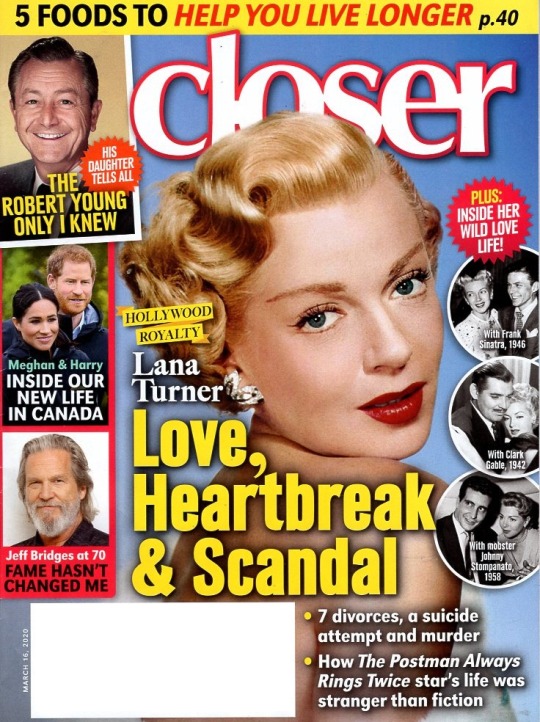
Page 1: Contents
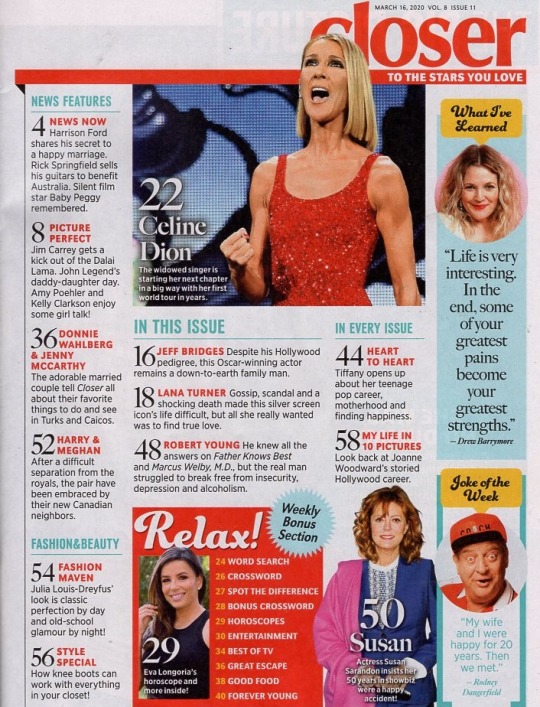
Page 2: The Big Picture -- Mae West along her Perfect 36 dress dummy and Kate Smith’s Large and Miriam Hopkins’ Boyish in 1932
Page 4: Harrison Ford opens up about his home life
Page 5: Baby Peggy -- farewell to the final surviving child star of the Silent Era, Rick Springfield auctions guitars to help Australia
Page 6: Hellos & Goodbyes
Page 8: Picture Perfect -- Debra Messing with her dog Henry, Amy Robach and her dog Metro, Sherri Shepherd and her dog Lexi
Page 10: Jim Carrey on his show Kidding, John Legend and his daughter Luna, Amy Poehler and Kelly Clarkson
Page 12: Mardi Gras -- Bryan Cranston
Page 13: Jennifer Coolidge, Robin Thicke and his son Julian, Charlie Day and Mary Elizabeth Ellis
Page 16: Jeff Bridges -- Hollywood hasn’t changed me -- he grew up surrounded by stardom but the beloved actor has always stayed grounded
Page 18: Cover Story -- Lana Turner -- inside her scandalous world -- the screen icon’s glamorous existence was riddled with heartbreak and pain
Page 22: Celine Dion rebuilding her life -- she has put aside her sadness to embark on a new journey
Page 27: Spot the Difference -- Joel McKinnon Miller on Brooklyn Nine-Nine
Page 29: Horoscopes -- Pisces Eva Longoria
Page 30: Entertainment -- Rufus Sewell on The Pale Horse, Michael O’Neill of Council of Dads, In the Spotlight -- Catherine McCormack
Page 32: Movies -- Ben Affleck on The Way Back, DVDs
Page 33: Books, Music -- Mandy Moore on Silver Landings
Page 34: Television
Page 36: Great Escape -- Donnie Wahlberg and Jenny McCarthy on Turks & Caicos
Page 40: 5 foods to help you live longer, Ellen Pompeo
Page 42: Whatver Happened to the Waitresses From Alice -- Polly Holiday, Linda Lavin, Beth Howland, Diane Ladd, Celia Weston
Page 43: It Happened This Week
Page 44: Tiffany opens up about music, motherhood and why she’s happier than ever
Page 48: The Robert Young nobody knew -- the Father Knows Best dad’s real life daughter remembers him as a complicated caring man
Page 50: Susan Sarandon -- fame, family and 50 years in showbiz
Page 52: Inside Prince Harry and Meghan Markle’s new life -- bucolic Vancouver Island offers the couple everything they need for a fresh start
Page 54: The style of Julia Louis-Dreyfus
Page 58: My Life in 10 Pictures -- Joanne Woodward
Page 60: Flashback
#tabloid#tabloid toc#lana turner#frank sinatra#clark gable#johnny stompanato#robert young#meghan markle#harry#prince harry#harry and meghan#jeff bridges#celine dion#susan sarandon#mae west#harrison ford#Joanne Woodward
2 notes
·
View notes
Text
Announcing | Artists Supporting Artists: A NYFA Benefit Show

Samira Abbassy, Polly Apfelbaum, Amy Hill, LoVid, Barbara Nessim, Joan Semmel, Daniel Rich, Miriam Schapiro, and Sandy Skoglund are among the participating artists.
New York Foundation for the Arts (NYFA) is pleased to present Artists Supporting Artists: A NYFA Benefit Show from Tuesday, March 17 - Friday, April 3, 2020 at ChaShaMa’s Space to Present at 340 East 64th Street.* All works, created by more than 50 established and emerging artists, will be up for bidding on Tuesday, March 17; proceeds will support NYFA programs and resources that serve artists throughout the United States and internationally.
*As of March 16, all ChaShaMa spaces are closed due to the threat of COVID-19. All works can be viewed via the online auction catalog.
The pieces on display will range from colorful abstract and figurative paintings to textile art, drawings, artist books, collage works, photography, and sculptures.
Featured artists include:
Samira Abbassy, Leslie Alfin, Fanny Allié, David Ambrose, Polly Apfelbaum, Tomie Arai, Andrea Arroyo, Katie Bell, Judith Brodsky, Deric Carner, Bill Carroll, Darlene Charneco, Cecile Chong, Ellen Colcord, Maria de los Angeles, Marylyn Dintenfass, Sally Egbert, Patricia Fabricant, Jim Gaylord, Janet Goleas, Michael Haggiag, Amir Hariri, Amy Hill, Jean Holabird, Barry Holden, Brian Hopkins, Anna Kott, Eleanora Kupencow, Donald Lipski, Nicola López, LoVid, Sangram Majumdar, Jeanette May, Andy Mister, Aya Miyatake, Ryan Sarah Murphy, Natalia Nakazawa, Barbara Nessim, Lee O’Connor, Paul Pagk, Dorothy Paolo, Joel Perlman, Armita Raafat, Daniel Rich, Jessica Rohrer, Michael Rosch, Carol Ross, Toni Ross, Nadia Sablin, Miriam Schaer, Joan Semmel, Miriam Schapiro, Sandy Skoglund, Arlene Slavin, Claire Watson, Edwina White, Shihori Yamamoto, and Nina Yankowitz.
Sign up for NYFA’s bi-weekly newsletter, NYFA News, to receive announcements about future NYFA events and programs.
Image: Sandy Skoglund (Fellow in Sculpture ’88)
Homepage Image Detail: Maria de los Angeles, Virgin de Guadalupe y El Indio, 2019
#nyfahof#nyfa hall of fame#hall of fame#benefit auction#benefitauction#exhibition#exhibit#chashama#nyfa#new york foundation for the arts#newyorkfoundationforthearts#announcement
1 note
·
View note
Photo



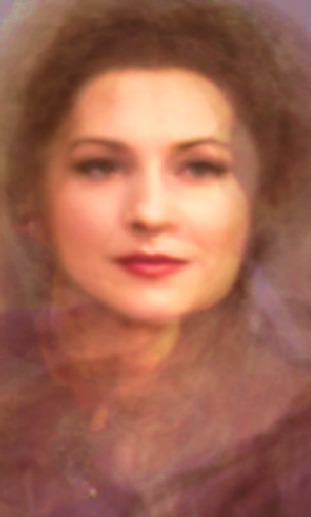
Eh, why not--these composites are really fun to make. So here are more characters from “Phantom” based on mine and @meggiry-khaleesi‘s headcanon appearances!
Top left: Carlotta Giudicelli, based on a mix of Adelina Patti, Marcella Albani, Kristen Chenowith, Rachel Anne Moore, Trista Moldovan, Minnie Driver, Gabriella Zanchi, Jean Harlow, Virginia Pearson, Catherine Tate, Ekaterina Lekhina, Kim Stengel, Audra McDonald, Irina Samoylova, Eartha Kitt, Rosemary Ashe, Magda Olivero, Miriam Hopkins, Madeline Kahn, Paola Barale, and Hazel Court.
Top right: Cecile Jammes, based on a mix of Kara Klein, Melanie Thierry, Aissa Maiga, Lily James, and Sharon Millerchip.
Bottom left: La Sorelli, based on a mix of Bianca Balti, Sophia Loren, Natalie Dormer, Rachelle Ann Go, Asmeret Ghebremichael, Janelle Monae, Ciara Renee, Elizabeth Taylor, and Anna Pavlova.
Bottom right: Madame Giry, based on a mix of the Oslo Norway dance teacher, Liz Robertson, Paula Capovillia, Ellen Harvey, Mary Millar, Anne Kanengeiser, Miranda Richardson, Elena Obraztsova, Marilyn Caskey, Heather Jackson, Nancy Hess, Katharine Alexander, Diana Rigg, Michelle Fairley, Bernadette Peters, and Donna Murphy.
#can't stop won't stop XD#the phantom of the opera#my edits#la carlotta#cecile jammes#la sorelli#madame giry
15 notes
·
View notes
Text
Dr. Death’s victim list
Acton, Lily
Adams, Lizzie
Adkinson, Sarah
Adshead, Norman
Adshead, Rose Ann
Aitken, Irene
Andrew, Dorothy Mary
Andrew, Joseph
Andrew, Mary Emma
Arrandale, Albert
Arrowsmith, Winifred
Ashcroft, Netta
Ashton, Dora Elizabeth
Ashton, Ellen
Ashworth, Ada
Ashworth, Brenda
Ashworth, Elizabeth
Ashworth, James
Ashworth, Sarah
Aveyard, Clara Ethel
Baddeley, Elizabeth Mary
Baddeley, John
Bagshaw, Bertha
Barber, Squire
Bardsley, Joseph
Bardsley, Lily
Bardsley, Nellie
Barker, Elsie
Barlow, Charles Henry
Barnes, James Edward
Battersby, Elizabeth
Baxter, William
Beech, Joseph
Bell, Norman John
Bennett, Ethel
Bennett, Frances
Bennett, Nellie
Bennison, Charlotte
Bent, Arthur
Berry, Irene
Bill, Edith Annie
Birchall, Mary Ivy
Bird, Violet May
Black, Alice
Boardman, Kathleen May
Boardman, Mary Louisa
Bogle, Geoffrey
Bolland, Alice
Bowers, Mary Elizabeth
Bradshaw, Miriam
Brady, Edith
Bramwell, Harold
Bramwell, Vera
Brassington, Charles Geoffrey
Brassington, Nancy Anne
Bridge, Doris
Bridge, Jane
Brierley, Albert
Brierley, Edith
Broadbent, Lily
Brock, Edith
Brocklehurst, Charles Edward
Brocklehurst, Vera
Brooder, Irene
Brookes, Lily
Brookes, May
Brown, Alice
Brown, Mary Alice
Brown, William Henry
Buckland, Edward
Buckley, Ethel
Burke, Elizabeth Mary
Butcher, Lydia Edith
Cains, Ida
Callaghan, Sean Stuart
Calverley, Edith
Campbell, Annie
Carradice, Marion
Carrington, Alice
Carroll, Josephine May
Cartwright, Hannah
Chadwick, Wilfred
Challinor, Ivy Elizabeth
Challoner, Genevieve
Chapman, Irene
Chappell, Alice
Chappell, Wilfred
Charlton, John
Charnock, George
Cheetham, Albert
Cheetham, Alfred
Cheetham, Elsie
Cheetham, Hena
Cheetham, Norah
Cheetham, Thomas
Chidlow, Amy
Clarke, Fanny
Clayton, Elsie
Clayton, Frances
Clee, Beatrice Helen
Clough, James
Condon, Thomas
Connaughton, Alice Hilda
Connors, Michael
Conway, Margaret Ann
Coomber, Frederick
Cooper, Ann
Copeland, Erla
Copeland, Sydney Hoskins
Couldwell, Constance Anne
Coulthard, Ann
Coutts, Mary
Couzens, Hilda Mary
Cox, Eileen Theresa
Crompton, Eileen Daphne
Crompton, Frank
Crompton, John
Crossley, Lily
Cullen, Lilian
Cuthbert, Valerie
Davies, Cissie
Davies, Eric
Davies, Fred
Davies, Miriam
Dawson, Fanny
Dean, Elsie Lorna
Dean, Joan Edwina
Delaney, Bessie
Denham, Christopher
Dentith, Frederick
Devenport, Ronnie
Dixon, Alice
Dobb, Edgar
Dolan, Ethel
Drinkwater, Alice
Drummond, Joseph
Dudley, Mary Rose
Dutton, Elaine
Earls, Doris
Earnshaw, William
Eddleston, Harold
Eddleston, Monica
Edge, Agnes
Evans, Bethel Anne
Everall, Hannah
Everall, Joseph Vincent
Farrell, Phyllis
Fernley, Marie Antoinette
Firman, Mary Elizabeth
Fish, Hilda
Fitton, Hilda
Fletcher, Dorothy
Fletcher, Elizabeth
Floyd, Arthur
Fogg, Leah
Foulkes, Edwin
Fowden, Thomas
Fox, Moira Ashton
France, John
Freeman, Harold
Freeman, Winifred
Frith, Hannah
Galpin, Minnie Doris Irene
Garlick, Rose
Garlick, Violet
Garratt, Mary Alice
Garside, Millicent
Gaskell, Marion
Gaunt, Mary
Gee, Nellie
Gess, Clifford
Givens, William
Goddard, Edith
Godfrey, Elsie
Golds, Annie Elizabeth
Gorton, Alice Maude
Graham, Edith
Gray, Rebecca
Greenhalgh, John Sheard
Grimshaw, Annie
Grimshaw, Muriel
Grundy, Donald Anthony
Grundy, Kathleen
Grundy, Nora
Hackney, Clara
Hackney, Clara
Hadfield, Violet
Hague, William
Hall, Josephine
Halliday, Frank
Hallsworth, Janet
Hamblett, Leonora
Hamer, Mary Emma
Hammond, Caroline Veronica
Hampson, Jesse
Hancock, Christine
Hannible, Elsie
Harding, Joan Milray
Harris, Charles
Harris, Harriet
Harrison, Christina
Harrison, David Alan
Harrison, Marion
Harrison, Muriel Eveline
Harrison, Samuel
Harrop, Elsie
Haslam, Mary Elizabeth
Hawkins, Sarah
Healey, Winifred
Heapey, Clifford Barnes
Heapey, Gladys
Heathcote, Irene
Heginbotham, Olive
Hennefer, Ellen
Hett, Mary Jane
Heywood, Ada
Heywood, Florence
Hibbert, Hilda Mary
Hickson, Robert
Higginbottom, George Eric
Higginbottom, Peter
Higgins, Barry
Higgins, Lily
Higham, Marion Elizabeth
Highley, Ruth
Higson, Ellen
Hill, Sarah Ann
Hillier, Pamela Marguerite
Hilton, Ada Matley
Hilton, John
Hirst, Emma
Holgate, Ethel Doris
Holland, Alline Devolle
Holt, Alice
Hopkins, Dorothy Doretta
Howcroft, John
Hulme, Hilda
Hurd, May
Iwanina, Jozef
Jackman, Harold Edward
Jackson, Maureen Lamonnier
Jackson, Nancy
Jameson, Ronald
Jeffries, Beatrice
Johnson, Norah
Johnson, Richard
Johnston, Leah
Jones, Alice Mary
Jones, David
Jones, Hannah
Jones, Ivy
Jones, Jane
Jones, Robert Edward
Jordan, Mary Ellen
Keating, Mary
Kellett, Ethel May
Kellett, Fred
Kelly, Ellen
Kelly, Moira
Kennedy, Alice
Killan, Charles Henry
King, Elsie
King, James Joseph
Kingsley, Mary
Kitchen, Alice Christine
Lacey, Renee
Leach, Florence
Leech, Edith
Leech, William Henry
Lees, Olive
Leigh, Carrie
Leigh, Joseph
Leigh, Wilfred
Lewis, Elsie
Lewis, Florence
Lewis, Peter
Lilley, Jean
Lingard, Robert Henry
Linn, Laura Frances
Livesey, John Louden
Llewellyn, Edna May
Lomas, Harry
Lomas, Ivy
Long, Dorothy
Longmate, Thomas Alfred
Lord, Jane Ellen
Lowe, Beatrice
Lowe, Esther
Lowe, May
Lyons, Eva
MacConnell, Charles
Mackenzie, Selina
Mackie, Christina McCulloch
Mansfield, Mary Ann
Mansfield, Walter
Marley, Martha
Marsland, Sarah Hannah
Matley, Maud
McDonald, Kathleen
McLaren, William James
McLoughlin, Gertrude
Melia, Joan May
Mellor, Elizabeth Ellen
Mellor, Samuel
Mellor, Winifred
Meredith, Oscar
Metcalfe, Margaret
Middleton, Deborah
Middleton, Mary
Mills, Samuel
Mitchell, Cyril
Mitchell, Wilbert
Molesdale, John Bennett
Morgan, Emily
Moss, Bertha
Moss, Hannah
Mottram, George Henry
Mottram, Hannah Helena
Mottram, Pamela Grace
Moult, Thomas
Mullen, Nellie
Mycock, Miriam Rose Emily
Needham, Nora
Nicholls, Violet
Nichols, Fanny
Nichols, Lily
Nuttall, Hervey
Nuttall, Norah
O'Sullivan, Thomas
Ogden, Mary
Oldham, Agnes
Oldham, Samuel
Oswald, Frances Elaine
Otter, Enid
Ousey, Margaret
Ovcar-Robinson, Konrad Peter
Overton, Renate Eldtraude
Oxley, Phyllis
Parker, Marjorie
Parkes, Annie
Parkin, Laura Victoria
Parr, Bertha
Pearce, Elizabeth
Pedley, Rosetta
Penney, Vara
Pickering, Leah
Pickup, Kenneth
Pickup, Mavis Mary
Pitman, Edith
Platt, Elsie
Platt, Marion
Pomfret, Bianka
Potts, Frances
Potts, Reginald
Powers, Annie Alexandra
Preston, Ada Marjorie
Prestwich, Alice
Proud, Ethel May
Quinn, Marie
Ralphs, Anne Lilian
Ralphs, Ernest Colin
Rawling, Alice
Reade, Audrey
Redfern, Tom
Renwick, Dorothea Hill
Richards, Jose Kathleen Diana
Richardson, Alice
Riley, Stanley
Roberts, Edith
Roberts, Esther Hannah
Roberts, Gladys
Robinson, Eileen
Robinson, Eveline
Robinson, Lavinia
Robinson, Mildred
Rogers, Elizabeth Ann
Rostron, Jane Frances
Rowarth, Dorothy
Rowbottom, Annie
Rowland, Jane Isabella
Royles, Elsie
Royston, Betty
Rudol, Ernest
Russell, Tom Balfour
Sankey, Margaret
Saunders, Albert Edward
Saunders, Gladys
Scott, Edith
Scott, Elsie
Sellors, Kate Maud
Sharples, Cicely
Shaw, Joseph
Shaw, Leonard
Shaw, Lilian
Shaw, Neville
Shaw, Susan Eveline
Shawcross, Edna
Shawcross, Ernest
Shawcross, Mabel
Shelmerdine, Jack Leslie
Shelmerdine, Jane Elizabeth
Shore, Lily
Sidebotham, Florence
Sigley, Elizabeth Teresa
Simpson, Kenneth Harry
Slater, Albert
Slater, Florence
Slater, Lena Norah
Slater, May
Smith, Alice
Smith, Dora Elizabeth
Smith, Emma
Smith, Kenneth Ernest
Smith, Margaret
Smith, Mary Alice
Smith, Sidney Arthur
Smith, Winifred Isabel
Sparkes, Monica Rene
Squirrell, Alice
Stafford, Harry
Stafford, Kate Elizabeth
Stansfield, Joe Ainscow
Stocks, Louisa
Stone, John
Stopford, Arthur Henderson
Stopford, Harriet
Strickland, Ruth
Sumner, Grace
Swann, Bessie
Swann, Robert
Swindells, Emmeline
Taylor, Caroline Mary
Taylor, Edna Mary
Taylor, Florence
Taylor, Lily Newby
Taylor, Mary
Tempest, Mary Ann
Thomas, Alice
Thomas, Sarah Ann
Thornton, Maria
Tideswell, Sarah
Tierney, Angela Philomena
Tingle, Walter
Toft, Beatrice
Tomlin, Mary
Townsend, Margaret
Tucker, Dorothy
Tuff, Mary
Tuffin, Winifred Amy
Turner, Frances Elizabeth
Turner, Irene
Uttley, Stanley
Vickers, Frederick
Vickers, Margaret Mary
Virgin, Lucy
Vizor, George Edgar
Vizor, May
Wagstaff, George Lawton
Wagstaff, Jessie Irene
Wagstaff, Laura Kathleen
Waldron, Margaret Anne
Walker, Edward
Walker, Ellen
Walker, Henrietta
Walker, Winifred Mary
Waller, Harry
Waller, Marjorie Hope
Walls, Mary
Walton, Sydney
Warburton, Ada
Ward, Maureen Alice
Ward, Minnie
Ward, Muriel Margaret
Ward, Percy
Wardle, Eric
Wareing, William Hill
Warren, May
Wass, Kathleen May
Watkins, Annie
West, Maria
Wharam, Ellen Frances
Wharmby, Lavinia
White, Mona Ashton
Whitehead, Amy
Whitham, Colin
Whittaker, Maureen
Whittaker, Violet Mary
Whittingslow, Vera
Whittle, Edith
Wibberley, Edith
Wilcockson, Joseph Frank
Wilkinson, Annie
Wilkinson, Maud
Williams, Albert Redvers
Williams, Emily
Williamson, Sarah Jane
Wills, Jack
Wilmore, Margaret
Wilson, Muriel Elsie
Wimpeney, Mark
Winston, George
Winston, Olive
Winterbottom, Mary
Wood, Annie
Wood, Charles Henry
Wood, Fanny
Wood, James
Woodhead, Joyce
Woodhead, Kenneth Wharmby
14 notes
·
View notes
Text
On the Literary and Libidinous Miriam Hopkins
On the Literary and Libidinous Miriam Hopkins
An appreciation today for histrionic Hollywood hotsy-totsy Miriam Hopkins (Ellen Miriam Hopkins, 1902-1972).
Don’t read too much into that description, I just like alliteration. On the other hand, yeah, she was one of the sexiest of all Pre-Code actresses. She had much in common with Tallulah Bankhead— more than I realized. For, like Tallulah, Hopkins was a wayward Southern belle, from Georgia…
View On WordPress
0 notes
Text
Rosamund Pike Biography, age, weight, height, movies, husband, scandal, body measurement, net worth

Rosamund Pike Biography, age, weight, height, movies, husband, scandal, body measurement, net worth. Rosamund Pike is an English actress. She was born in Hammersmith, London, England on 27 January 1979. She started her career by

appearing in stage productions such as Skylight and Romeo and Juliet. She appeared in television film A Rather English Marriage (1998) and television roles in Wives and Daughters (1999) and Love in a Cold Climate (2001).
Rosamund Pike Biography, age, weight, height, movies, husband, scandal, body measurement, net worth
Date of Birth:
1979 , January-27
Age:
39 years old
Birth Nation:
England
Height:
5 Feet 8 Inch
Name
Rosamund Pike
Birth Name
Rosamund Mary Ellen Pike
Father
Julian Pike
Mother
Caroline Friend
Nationality
British
Birth Place/City
Hammersmith, London, England
Religion
Christian
Ethnicity
Caucasian
Profession
Actress
Eye Color
Blue
Hair Color
Blonde
Face Color
white

Rosamund Pike Scandal, Affair, husband, boyfriend
Affair with
Simon Woods, Joe Wright
Boyfriend
Robie Uniacke
Married
NO
Children
Solo Uniacke and Atom Uniacke
Siblings
None
Rosamund Pike Body Measurement
Body Measurements
32-24-33 in (81-61-84 cm)
Breast Size
32B
Waist size
24 inches
Hip Size
33 inches
Shoe Size
8 (US)

Rosamund Pike Net Worth
Net Worth
$9 million
Rosamund Pike Movies
Year
Title
Role
Notes
2002
Die Another Day
Miranda Frost
2004
Promised Land
Rose
The Libertine
Elizabeth Malet
2005
Pride & Prejudice
Jane Bennet
Doom
Dr. Samantha Grimm
2007
Fracture
Nikki Gardner
Fugitive Pieces
Alex
2009
An Education
Helen
Surrogates
Maggie Greer
Yesterday We Were in America
Narrator
Documentary
2010
Burning Palms
Dedra Davenport
Jackboots on Whitehall
Daisy
Voice
Barney's Version
Miriam Grant-Panofsky
Made in Dagenham
Lisa Hopkins
2011
The Organ Grinder's Monkey
Rochelle
Short film
Johnny English Reborn
Kate Sumner
The Big Year
Jessica
2012
Wrath of the Titans
Queen Andromeda
Jack Reacher
Helen Rodin
2013
The Devil You Know
Zoe Hughes
The World's End
Sam Chamberlain
2014
A Long Way Down
Penny
Hector and the Search for Happiness
Clara
What We Did on Our Holiday
Abi
Gone Girl
Amy Elliott Dunne
2015
Return to Sender
Miranda Wells
2016
A United Kingdom
Ruth Williams Khama
2017
The Man with the Iron Heart
Lina Heydrich
Hostiles
Rosalie Quaid
2018
Beirut
Sandy Crowder
Entebbe
Brigitte Kuhlmann
Three Seconds
Wilcox
In post-production
A Private War
Marie Colvin
In post-production
2019
Radioactive
Marie Curie
In post-production
Rosamund Pike Televisions
Year
Title
Role
Notes
1998
Seven Days
CIA Agent
Pilot
A Rather English Marriage
Celia
Television film
1999
Wives and Daughters
Lady Harriet Cumnor
3 episodes
2000
Trial & Retribution
Lucy
Episode: "Trial & Retribution IV Part 1"
2001
Love in a Cold Climate
Fanny
2 episodes
2002
Bond Girls Are Forever
Herself
Documentary
Foyle's War
Sarah Beaumont
Episode: "The German Woman"
2008
The Tower
Olivia Wynn
Pilot
2009
Freefall
Anna
Television film
2011
Women in Love
Gudrun Brangwen
2 episodes
2015–present
Thunderbirds Are Go
Lady Penelope Creighton-Ward /
Captain Ridley O'Bannon
Voice
2019
Moominvalley
Moominmamma
Voice
Read the full article
#RosamundPikeaffair#RosamundPikeage#RosamundPikebio#RosamundPikeBiography#RosamundPikebodymeasurement#RosamundPikebodystats#RosamundPikeboyfriend#RosamundPikefamily#RosamundPikefigure#RosamundPikeheight#RosamundPikehusband#RosamundPikemovies#RosamundPikenetworth#RosamundPikephysicaldetails#RosamundPikescandal#RosamundPiketelevisions#RosamundPikeweight#RosamundPikewiki
1 note
·
View note
Text
9 ottobre … ricordiamo …
9 ottobre … ricordiamo …
#semprevivineiricordi #nomidaricordare #personaggiimportanti #perfettamentechic #felicementechic #lynda
2018: Venantino Venantini, all’anagrafe Enrico Venantino Venantini, attore italiano. Padre dell’attore Luca Venantini. (n. 1930)
2017: Jean Rochefort, Jean Raoul Robert Rochefort, attore francese. (n. 1930)
2013: Norma Bengell, all’anagrafe Norma Aparecida Almeida Pinto Guimarães D’Áurea Bengell e conosciuta anche come Norma Benguel, attrice, cantante e regista brasiliana. Dal 1963 al 1967 era…

View On WordPress
#9 ottobre#Alice Joyce#Ann Boothe#Arch Johnson#Archibald Winchester Johnson#Clare Boothe Luce#Edith Storey#Ellen Miriam Hopkins#Enrico Venantino Venantini#Giuliano Ravizza#Harald Reinl#Helen Morgan#Helen Riggins#Helene Lucie von Holwede#Jean Raoul Robert Rochefort#Jean Rochefort#Joyce Fair#Lucie Höflich#Marie Doro#Miriam Hopkins#Morti 9 ottobre#Norma Aparecida Almeida Pinto Guimarães D&039;Áurea Bengell#Norma Bengell#Norma Benguel#Personaggi importanti#Persone da ricordare#Ricordando ..#Ricordiamo#Ruth Gloria Ibáñez#Ruth Hall
0 notes
Audio
This episode we talk about Experimental Fiction and stumble all over our words and can’t pronounce anything right. We explore experimental comics, wonder at what point experimental fiction stops being experimental, and are amazed at how a book with no plot at all can break through a reading slump.
You can download the podcast directly, find it on Libsyn, or get it through iTunes, Stitcher, Google Play or your favourite podcast delivery system.
In this episode
Anna Ferri | Meghan Whyte | Matthew Murray | Jessi
Books (and things) We Read (or tried to)
The Story of My Teeth by Valeria Luiselli
Dictionary of the Khazars by Milorad Pavić
17776: What football will look like in the future by Jon Bois
Jimmy Corrigan: The Smartest Kid on Earth by Chris Ware
Wittgenstein's Mistress by David Markson (and yes, Anna hasn’t a clue how to pronounce this)
Multiple Choice by Alejandro Zambra
How to be Both by Ali Smith
Books We Mentioned
Captain Underpants by Dav Pilkey
Frankenstein by Mary Shelley or…
Ulysses by James Joyce (the obvious example Anna should have used of experimental fiction just becoming a “classic” of literature”
Gertrude Stein
To The Lighthouse by Virginia Woolf
Greyshirt: How Things Work Out (from Tomorrow Stories) by Alan Moore and Rick Veitch (Matthew wasn’t totally right in how he described it, but it’s been years since he read it).
Here by Richard McGuire
The Sot-Weed Factor by John Barth
Mason and Dixon by Thomas Pynchon
Suicide Forest by Dave Baker and Nicole Goux
Promethea by Alan Moore and J. H. Williams III
Longshot Comics: The Long and Unlearned Life of Roland Gethers by Shane Simmons
Dinosaur Comics by Ryan North
Trainspotting by Irvine Welsh
Clockwork Orange by Anthony Burgess
Riddley Walker by Russell Hoban
Abahn, Sabana, David by Marguerite Duras, translated by Kazim Ali
Hopscotch by Julio Cortázar
2666 by Roberto Bolaño
Breaking the Sequence: Women's Experimental Fiction edited by Ellen G. Friedman and Miriam Fuchs (the book of literary essays about women writing experimental fiction)
S. by J.J. Abrams, Doug Dorst
Building Stories by Chris Ware (collected ephemera comic)
Blindness by José Saramago
A Void by Georges Perec (Book without the letter E)
Ella Minnow Pea by Mark Dunn
There Once Lived a Woman Who Tried to Kill Her Neighbor’s Baby by by Ludmilla Petrushevskaya
Pale Fire by Vladimir Nabokov
The Mezzanine by Nicholson Baker
Mary Roach
Links, Articles, and Things
Our Episode on Metafiction
Experimental literature (Wikipedia)
Ellen Hopkins (writes YA novels in verse)
Jessi made a booklist once long ago for those who are into experimental fiction
Experimental Fiction article from mapliteracy.org (The definition that Meghan quotes)
David Foster Wallace calls Wittgenstein’s MIstress “pretty much the pinnacle of modern experimental fiction” and also calls out a few other “underappreciated” novels
There are so many amusing reviews of Wittgenstein's Mistress on Goodreads:
Like this one
And this one
Or even this one
Questions
What counts as experimental fiction?
What’s your favourite experimental fiction?
Contest
Winners, please contact us with your addresses!
Check out our Pinterest board and Tumblr posts for all the Experimental Fiction books we read, follow us on Twitter, join our Facebook Group, or send us an email!
Join us again on Tuesday, October 3rd, for our Halloween episode when we’ll be talking about our favourite spoooOOOOooooky books.
Then come back on Tuesday, October 17th, when we’ll be discussing non-fiction Travel books!.
1 note
·
View note
Text
Hyperallergic: Art Movements
Henry Stanier, “Karnak” (1868), watercolor and bodycolor, 665 x 476 mm, British Museum 1994 (© The Trustees of the British Museum)
Art Movements is a weekly collection of news, developments, and stirrings in the art world.
Archaeologists discovered a 26-foot statue submerged in groundwater in east Cairo. The sculpture is thought to depict Pharaoh Ramses II, also known as Ramses the Great or Ozymandias.
Authorities on the Indonesian island of Bali refused to cover up nude statues and figures of Hindu deities ahead of a visit by the king of Saudi Arabia, Salman bin Abdulaziz Al Saud.
A watercolor by little-known artist Henry Stanier went on display alongside works by James Whistler and John Singer Sargent as part of the British museum’s Places of the Mind: British watercolour landscapes 1850–1950 exhibition. The watercolor, which depicts the Temple of Karnak in Egypt, was one of three paintings by the artist found at the museum by curator Kim Sloan over ten years ago. It’s still not known how the works entered the museum’s collection.
Jeff Koons was convicted of plagiarism by a French court over his 1988 ceramic sculpture “Naked.”
Iraqi archaeologists claim to have unearthed an Assyrian period palace underneath the Nebi Yunus shrine in Iraq. The site was discovered during a search of tunnels dug by ISIS. Archaeologists and reporters confirmed that much of the Mosul antiquities museum‘s collection has been completely destroyed after Iraqi forces retook the museum from ISIS earlier this week.
Art adviser Lisa Jacobs was ordered to pay back the $1 million she made from the sale of Jean-Michel Basquiat’s painting “Future Sciences Versus the Man” (1983) by the New York Supreme Court. Jacobs sold the painting on behalf of Michael Schulhof — the former president of Sony Pictures — but did not disclose the painting’s true sale price, pocketing $1 million in the process. Judge Charles Ramo ruled that Jacobs had committed fraud and breached a contract that set her fee for the sale at $50,000.
Art storage company ARCIS was granted permission to open a tax-free warehouse (known popularly as a “freeport“) in New York. The 100,000-square-foot facility will open in Harlem later this year.
The Art Handlers Alliance of New York relaunched its foundational Bill of Rights as an online petition. The organization is calling for a citywide adoption of the bill.
Police identified and arrested a man who attacked a security guard at the Metropolitan Museum of Art last week. Brandon Aebersold struck the guard with a glass bottle shortly after complaining that a painting was crookedly displayed.
Grayson Perry took to Twitter to crowdsource models for a pair of vases inspired by the UK’s EU Referendum. The two vases, dubbed “Leave” and “Remain,” will be unveiled as part of a new program on Channel 4.
Adrián Villar Rojas was selected to create the fifth site-specific installation for the Metropolitan Museum of Art’s Iris and B. Gerald Cantor Roof Garden.
The New York City Landmarks Preservation Commission unanimously voted to grand landmark status to several of the Waldorf-Astoria‘s interiors.
The United States Copyright Office is soliciting feedback on current copyright laws from artists and photographers as part of a public study on moral rights for authors.
Transactions
Salvador Dalí, “Figura de perfil” (1925), oil on board, 29 3/16 x 19 11/16 in (courtesy Gala-Salvador Dalí Foundation)
The Gala-Salvador Dalí Foundation acquired the artist’s 1925 painting, “Figure in profile.” The work was purchased at Bonhams for just over $2,196,000.
Harvard Art Museums received a $250,000 grant from the Terra Foundation for American Art.
Transitions
Hong Ra-hee resigned from her posts as director general of Seoul’s Leeum, Samsung Museum of Art and director of the Ho-Am Art Museum. Ra-hee’s son, Lee Jae-yong — the acting head of Samsung Group — has been charged with embezzlement and bribery as part of the wider corruption investigation of South Korea’s impeached president, Park Geun-Hye.
Cooper Union laid off 14 members of its staff [via email announcement].
Christie’s announced that it will close down its London salesroom in South Kensington and scale back its operations in Amsterdam. According to the New York Times, the proposed changes may result in 250 layoffs.
Sonny Kalsi and Ellen Susman were appointed to the Hirshhorn Museum and Sculpture Garden’s board of trustees. Jarrett Gregory joined the museum’s curatorial team.
Stephanie Rosenthal was appointed director of Martin-Gropius-Bau.
Susanne Gaensheimer will succeed Marion Ackermann as artistic director of the Kunstsammlung NRW (NRW Art Collection) in Düsseldorf.
Jennifer M. Williams was appointed deputy director of Prospect New Orleans.
Chus Martínez was appointed to curate Sculpture Park Cologne’s ninth exhibition program.
Tonya McCain was appointed program manager at the Cummer Museum of Art & Gardens.
Sheetal Prajapati was appointed director of public engagement at Pioneer Works.
Margaret Doyle will leave her post as director of communications at the Museum of Modern Art to join the public relations firm Polskin Arts & Communications.
Popular Photography will cease publication after its next issue.
Accolades
Rineke Dijkstra, “Almerisa, Asylum seekers center Leiden, March 14, 1994” (1994) (© Rineke Dijkstra)
Rineke Dijkstra received the 2017 Hasselblad Award.
Kellie Romany received the Forward Arts Foundation’s 2016–2017 Emerging Artist Award.
Josh Mannis was awarded the 2017 NADA Artadia Award.
Opportunities
The Queens Museum launched an open call in conjunction with its upcoming exhibition, Marinella Senatore: La Piazza Universale/Social Stages. The museum is currently accepting song and sound submissions that will be used as inspiration for a new Queens anthem.
The National Gallery of Canada’s Canadian Photography Institute launched its first Research Fellowship Program.
Obituaries
Howard Hodgkin, “Snow Cloud” (2009–10) (© Howard Hodgkin, courtesy Gagosian; photo by Prudence Cuming Associates Ltd.)
Miriam Colón (1936–2017), actress. Founder of the Puerto Rican Traveling Theater in New York.
Paula Fox (1923–2017), novelist.
Spencer Hays (1936–2017), businessman and art collector.
Howard Hodgkin (1932–2017), artist.
Marian Javits (1925–2017), arts patron.
Ben Martin (1930–2017), photographer.
Misha Mengelberg (1935–2017), pianist and composer.
Robert Osborne (1932–2017), film historian and actor.
David Rubinger (1924–2017), photographer.
Irvine Sellar (1934–2017), property developer. Partnered with Renzo Piano on the construction of the Shard.
Louise Hopkins Underwood (1919–2017), co-founder of the Louise Hopkins Underwood Center for the Arts.
Boaz Vaadia (1951–2017), sculptor.
Dave Valentin (1952–2017), jazz flutist.
Leon Ware (1940–2017), music producer and writer.
Fred Weintraub (1928–2017), producer. Owner of The Bitter End coffeehouse.
Nancy Willard (1936-2017), children’s author and poet.
The post Art Movements appeared first on Hyperallergic.
from Hyperallergic http://ift.tt/2mOL1fL
via IFTTT
0 notes
Text
9 ottobre … ricordiamo …
9 ottobre … ricordiamo … #semprevivineiricordi #nomidaricordare #personaggiimportanti #perfettamentechic #felicementechic #lynda
2
018: Venantino Venantini, all’anagrafe Enrico Venantino Venantini, attore italiano. Attore atletico e prestante, ha interpretato oltre 150 film esordendo negli anni ’50. Con i pochi soldi così guadagnati sui set, si trasferisce a Parigi per vivere la sua grande passione per la pittura, effettuando il viaggio verso la capitale francese in una settimana, alla guida di una Lambretta. Attivo anche…
View On WordPress
#9 ottobre#Alice Joyce#Arch Johnson#Arch. W. Johnson#Archie Johnson#Edith Storey#Ellen Miriam Hopkins#Enrico Venantino Venantini#Giuliano Ravizza#Helen Morgan#Helen Riggins#Helene Lucie von Holwede#Jean Raoul Robert Rochefort#Jean Rochefort#Lucie Höflich#Marie Doro#Marie Katherine Steward#Miriam Hopkins#Morti 9 ottobre#Norma Aparecida Almeida Pinto Guimarães D&039;Áurea Bengell#Norma Bengell#Norma Benguel#Ruth Gloria Ibáñez#Ruth Hall#Venantino Venantini
0 notes